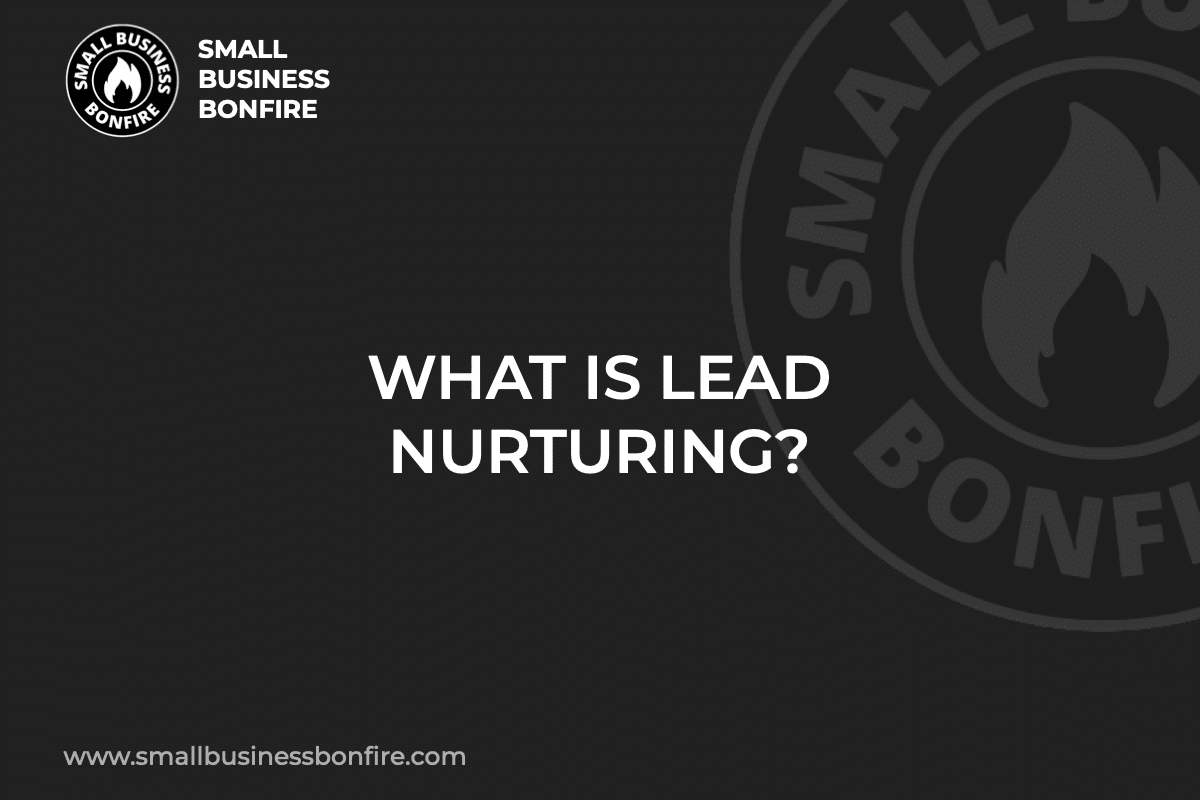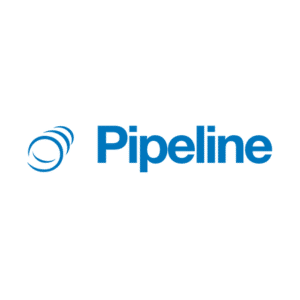Picture this: your sales team finds a prospective customer and guides them through the sales funnel but can’t seem to close the deal.
Sound familiar? Several small businesses struggle to close deals because they don’t have effective lead nurturing tactics.
Hi! My name is AJ! I recently sold my business for multiple seven figures. And after doing that, I’ve made it my mission to help other entrepreneurs build successful companies.
Running a business for several years taught me a lot of things. One critical lesson was the importance of lead nurturing efforts!
So, if you want your sales process to result in more closed deals, follow me. I break down lead nurturing strategies and everything in between!
Key Takeaways
- Lead nurturing is when companies use collected information to guide potential customers into paying ones.
- Lead scoring assigns a numerical value to help teams determine which people are likelier to make a purchase.
- Companies collect customer information through website activity, social media, and more!
Related Reading: Small Business CRM
SBB Featured Partners
What is Lead Nurturing?
Lead nurturing is a process in which sales and marketing teams collect and identify potential customers who are not quite ready to purchase yet.
Successful lead nurturing efforts predict a buyer’s needs based on the following things:
- User profile characteristics
- Effective communication channels
- Demographics
- Previous purchase history (if applicable)
Lead nurturing campaigns must keep potential customers engaged by providing relevant content that catches their attention.
Some types of content include the following:
- Social media posts
- Email marketing messages
- SMS text alerts
- Webinars
- Company updates
- Phone call
A good lead nurturing strategy is necessary for numerous reasons (which I’ll cover in the next section).
Why is Lead Nurturing Important?
Lead nurturing is vital for small businesses for several reasons.
First off, nurturing leads helps in building relationships with potential customers.
By consistently providing valuable and relevant content, businesses can stay top-of-mind among prospective clients.
This regular interaction establishes credibility and trust, which are crucial in decision-making.
Further, lead nurturing allows businesses to understand their customers better.
Businesses can learn more about customer preferences and pain points with each interaction.
This information is invaluable in crafting personalized marketing messages and offers, increasing conversion chances.
Lastly, an effective lead nurturing strategy can significantly reduce the sales cycle.
For example, by providing timely and helpful information, businesses can expedite the buyer’s journey, leading them to a quicker purchase decision.
Lead Nurturing Basics
Now you understand why your team must nurture leads; staying in close contact ensures your potential customers remember you!
But what things should sales and marketing teams focus on when developing a lead nurturing strategy?
Let’s take a look!
Customer Segmentation
Segmenting customers based on similar attributes is a lead nurturing essential.
Segmenting customers ensures your sales and marketing teams create content that resonates with each group, leading to fewer lost sales opportunities.
Companies can segment customers based on the following attributes:
- Age
- Sales stage
- Interests
- Preferred communication channel
- Job
Customer Nurturing
Once you’ve segmented your customers, creating a customer nurturing program is next.
A nurturing program should include a series of emails or messages sent to each customer group that educates them about your business and its products or services.
Ensure your team personalizes these messages depending on each segment!
Nurturing leads forms a bond of trust, making it easier to guide leads through the sales process.
Customer Focus
Customer focus involves personalizing the sales process whenever possible.
Calling customers by name or recalling personal details from previous conversations is an excellent way to drive customer focus.
Each communication point should aim to learn something more about the potential customer while simultaneously connecting with them!
Progressive Profiling
Progressive profiling is when companies ask for customer information incrementally during the sales cycle.
So, rather than asking for a potential customer’s interests, favorite products, address, etc., right off the bat, companies do this as they get to know the person.
That way, customers are likelier to give you more valuable information because they trust you more.
How to Create a Lead Nurturing Strategy
Before starting a lead nurturing program, it’s crucial to understand what actions drive success.
I’ve compiled a five-step process for building an effective lead nurturing program.
When you follow these steps, your marketing and sales teams will be on their way to driving more sales!
Step 1: Understand Your Buyer & Define Your Leads
The first step is understanding your target audience.
For instance, it’s wise to ask and consider the following things about your customers:
- What are your customers’ pain points?
- What purchase process do they typically follow?
- Why should potential customers be interested in your products?
Define the most appropriate messages and target your customers at each stage of the sales process.
Step 2: Segment Your Lists
As mentioned earlier, list segmentation is critical to successful lead nurturing campaigns.
Therefore, the second step is breaking down your list of potential customers into smaller groups.
Categorizing customers based on user profile characteristics or previous purchases helps you create targeted and personalized messages for each group.
Step 3: Whiteboard the Ideal Customer Experience
Whiteboarding the ideal customer experience involves mapping out a lead nurturing program that reflects your perfect buying process.
As you do this, identify any weak points or areas that might be difficult to implement.
It’s best to start with your end goal and work backward while whiteboarding the perfect customer experience.
Step 4: Plan Your Lead Nurturing Process
Now, it’s time to start planning out the specifics for your lead nurturing campaign.
This step involves creating a timeline that outlines when and how you will contact customers, what kind of content, and more.
Planning a clear schedule in advance helps ensure leads don’t fall through the cracks.
Also, it’s essential to note your lead nurturing process will be flawed on the first attempt (if it’s not, that’s impressive!); take what you learn and continually tweak the process.
Step 5: Automate Communications in a CRM
Automated communications save your sales team A LOT of time.
A CRM is a great way to automate communications. What is a CRM? CRMs are advanced programs that can streamline various processes, including lead nurturing!
Design automated communications to deliver educational information and gather essential data to improve marketing strategies.
Lead Nurturing Best Practices
An excellent lead nurturing process can be challenging and time-consuming at the start.
However, everything goes much smoother when you follow these six best practices I’ve compiled!
Let’s take a look at each of these practices!
Use Lead Scoring
Lead scoring is a methodology sales and marketing teams use to determine the ‘worthiness’ of leads, or potential customers, by assigning values based on their behavior relating to their interest in products or services.
The score helps prioritize leads, respond at the right time, and increase the conversion rate.
Lead scoring is a crucial element of lead nurturing, enabling your team to distinguish which leads are ready for a sales pitch!
Use an Omni-Channel Approach
Sales and marketing strategies that utilize various communication channels are more effective. It’s as simple as that.
As you nurture leads, reach out and connect with these individuals on multiple platforms.
Some of these platforms can include the following:
- Social media (Instagram, Facebook, Twitter, etc.)
- SMS text
- Phone call
Lead nurturing strategies that connect with customers at various communication channels also ensure these potential customers remember you!
Combine Generic and Personalized Approaches
While it’s important to nurture leads with personalization, you don’t have to personalize every step of the process.
For example, it’s okay to combine generic and personalized messages.
The generic messages should apply to a broad customer base and are excellent first communication points.
Utilize personalization for the prospects you deem the qualified leads.
Integrate Outbound Prospecting
Outbound prospecting involves finding potential customers from outside of your existing customer base.
In other words, you’re looking for leads who have yet to gain any knowledge or interactions with your brand.
This process might involve researching and studying relevant sources like industry-related websites, blogs, and publications to find new leads in your target market.
Re-Engage Lost Deals
Finally, don’t forget to re-engage those lost deals!
One of the key aspects of lead nurturing is staying top-of-mind with potential customers.
Reaching out and checking in occasionally with these leads helps bring them back into the sales funnel.
You can do this by sending periodic emails with the latest products, company updates, etc.
Empower Sales Reps
Lastly, every great lead nurturing strategy has tools and features that empower sales reps to make their own decisions and close deals efficiently.
Each sales rep in your company should feel confident they have the tools and information necessary for success.
With tools like CRMs, lead nurturing strategies, and a predetermined sales process, your team can feel equipped to handle anything that comes their way!
Lead Nurturing Strategies
In this section, I’ll review some of the best new nurturing strategies you and your team can implement.
While some of these techniques may not fit your business practices, there’s bound to be one your business can utilize!
Let’s see how your team can nurture leads effectively.
Outbound Calls
Outbound calls are proactive telephone calls made by sales representatives to potential consumers to promote a product or service.
These calls are typically part of a larger lead nurturing strategy, acting as a touchpoint that keeps your business at the forefront of the customer’s mind.
Outbound calls are an excellent way to determine qualified leads and gain valuable insights.
SMS Marketing Campaigns
SMS marketing campaigns are a great way to engage with potential customers and build relationships.
With increased mobile usage, SMS campaigns can help you reach out to more leads than ever.
The key is to keep your messages targeted and focused on one goal: nurturing the lead.
Typically, SMS campaigns are combined with marketing automation to send more generalized messages to nurtured leads as well as non-nurtured leads.
Email Drip Campaigns
Email drip campaigns are automated email sequences triggered after a customer takes an action or completes a task.
These campaigns aim to send out relevant information at specific intervals, such as product updates and industry news.
These emails should be personal and tailored to each individual lead.
Email drip campaigns are one of the most effective lead-nurturing tactics because this type of communication helps build relationships and trust.
Outbound Personalized Emails
Outbound personalized emails are a type of lead-nurturing tactic where sales reps send individualized messages to potential customers.
These emails are sent on an as-needed basis and should be tailored specifically for each customer.
The content in the email should provide value while still promoting your product or service.
Personalized emails emphasize why it’s critical to understand your target audience, as you need these messages to resonate and convert leads!
Retargeting Campaigns
Retargeting campaigns are a powerful way to stay in front of potential customers.
These campaigns involve showing targeted advertisements to people who have already visited your website or interacted with your brand in some way.
Retargeting is an effective (and automated) lead nurturing tactic because it reminds prospects of what you offer and keeps them engaged.
Social Media Communication
Ensuring your marketing team communicates with potential customers via social media outlets is a critical lead-nurturing strategy.
Depending on your target audience, most people who will buy your products or services are on social media platforms throughout the day.
Therefore, using lead nurturing tactics combined with social media marketing automation is an efficient way to engage with prospects and start the buyer’s journey.
Content Marketing
Content marketing is a form of lead nurturing that helps potential customers build trust with your brand.
By providing valuable content like blog posts, videos, and resources related to your industry, you can establish yourself as an authority in the space and nurture leads down the sales funnel.
Content marketing also keeps prospects engaged by giving them relevant and exciting information.
Lead Scoring Vs. Lead Nurturing
Lead scoring tactics are often confused with lead nurturing techniques; what’s the difference? Or are they the same thing?
A nurtured lead is a prospective customer your sales team determines to be a qualified lead, meaning this person will likely purchase your company’s products or services.
In comparison, lead scoring is a tactic to help teams determine which leads are likelier to purchase a product or service.
Lead scoring ensures teams utilize and prioritize their time correctly because they only spend time on the most qualified prospects.
On the other hand, lead nurturing is about maintaining relationships through constant communications at various touchpoints in the sales strategy.
Lead Nurturing Examples
Below, I’ll provide two brief lead nurturing examples for a hypothetical e-commerce store, “Good Threads.”
The first example is how Good Threads can use a lead-nurturing email to increase sales.
Good Threads regularly sends personalized emails to potential customers who have expressed interest in their products but haven’t yet purchased them.
For instance, if a user adds a pair of jeans to the cart but leaves without purchasing, they receive an email reminding them of the items left in their cart.
This email includes pictures of the items, a direct link to the cart, and a personalized message encouraging the user to complete the purchase.
Another tactic Good Threads can use to find the most successful leads is retargeting ads.
Good Threads utilizes retargeting campaigns on social media platforms to stay connected with visitors who have browsed the website but have yet to purchase.
They display ads featuring products visitors showed interest in, enticing them to return to the website.
This constant visibility strengthens brand recall and keeps Good Threads at the forefront of the potential customer’s mind, effectively nurturing leads.
Best Lead Nurturing Tools
What tools make converting leads easier? Is there a way to simplify lead generation?
Let’s look at two of the best lead nurturing tools in the industry!
Multi-Use CRM
A multi-use customer relationship management (CRM) system is handy for improving lead nurturing processes.
With a CRM, businesses can manage, track, and analyze all interactions and communications with potential customers.
Information on customers can lead to more personalized and effective communication strategies.
Lead Management Software
Lead management software helps companies capture, track, and manage leads throughout the sales process.
This software allows businesses to nurture leads more effectively by providing insights into customer data such as contact information, interests, purchase history, and more.
Lead Nurturing Final Thoughts
Lead nurturing helps align sales reps with the prospects who are most likely to purchase your company’s products or services.
When your team stays in regular contact with prospective customers, your company is the first to come to mind when they think of your industry’s products or services.
What tools will your team use to nurture leads? Let us know in the comments section below!
Newsletter Signup
Join The Leads Field Guide Newsletter for tips, strategies and (free) resources for growing your leads, and closing more deals.




